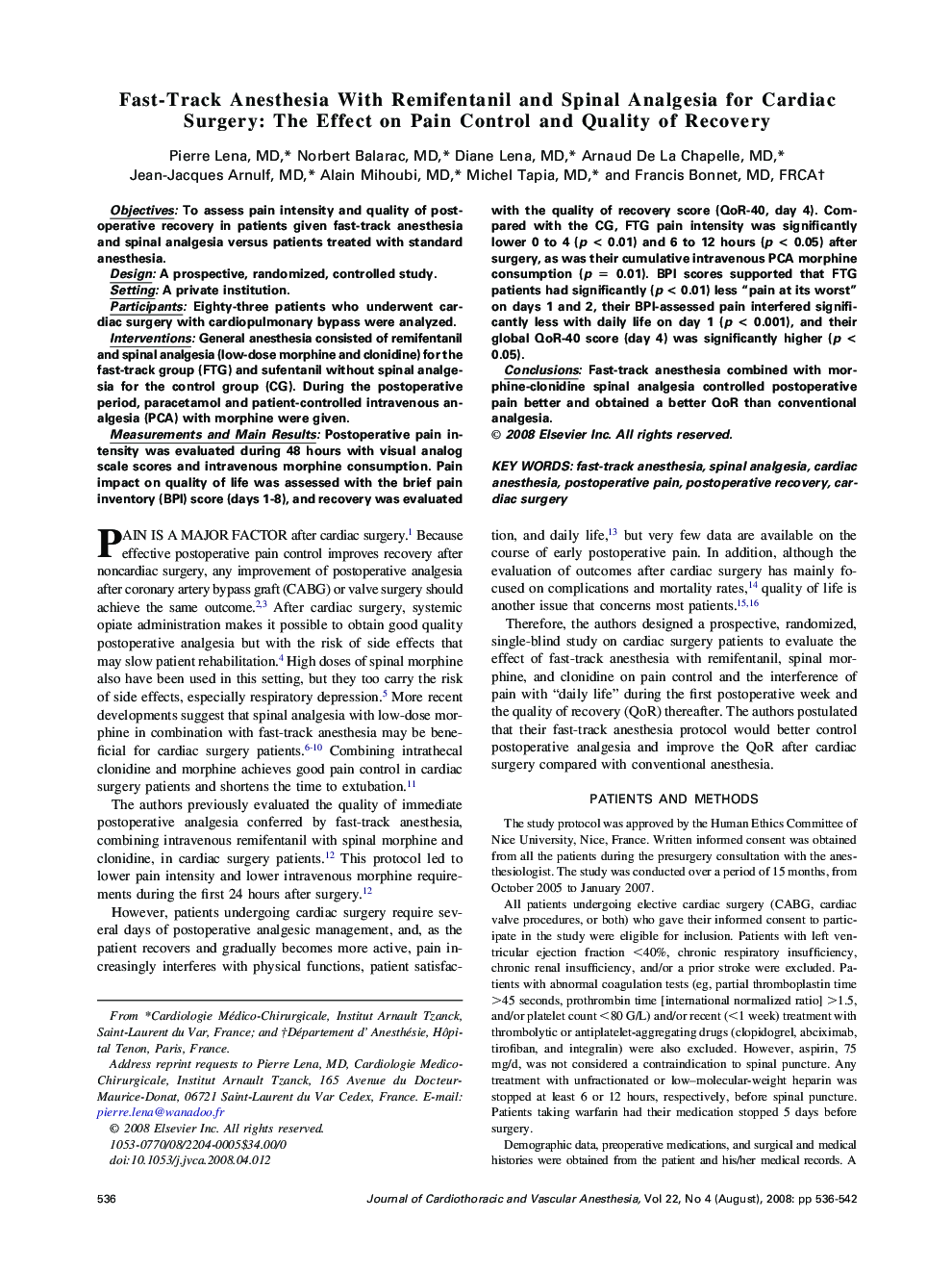| Article ID | Journal | Published Year | Pages | File Type |
|---|---|---|---|---|
| 2761949 | Journal of Cardiothoracic and Vascular Anesthesia | 2008 | 7 Pages |
Objectives: To assess pain intensity and quality of postoperative recovery in patients given fast-track anesthesia and spinal analgesia versus patients treated with standard anesthesia.Design: A prospective, randomized, controlled study.Setting: A private institution.Participants: Eighty-three patients who underwent cardiac surgery with cardiopulmonary bypass were analyzed.Interventions: General anesthesia consisted of remifentanil and spinal analgesia (low-dose morphine and clonidine) for the fast-track group (FTG) and sufentanil without spinal analgesia for the control group (CG). During the postoperative period, paracetamol and patient-controlled intravenous analgesia (PCA) with morphine were given.Measurements and Main Results: Postoperative pain intensity was evaluated during 48 hours with visual analog scale scores and intravenous morphine consumption. Pain impact on quality of life was assessed with the brief pain inventory (BPI) score (days 1-8), and recovery was evaluated with the quality of recovery score (QoR-40, day 4). Compared with the CG, FTG pain intensity was significantly lower 0 to 4 (p < 0.01) and 6 to 12 hours (p < 0.05) after surgery, as was their cumulative intravenous PCA morphine consumption (p = 0.01). BPI scores supported that FTG patients had significantly (p < 0.01) less “pain at its worst” on days 1 and 2, their BPI-assessed pain interfered significantly less with daily life on day 1 (p < 0.001), and their global QoR-40 score (day 4) was significantly higher (p < 0.05).Conclusions: Fast-track anesthesia combined with morphine-clonidine spinal analgesia controlled postoperative pain better and obtained a better QoR than conventional analgesia.
